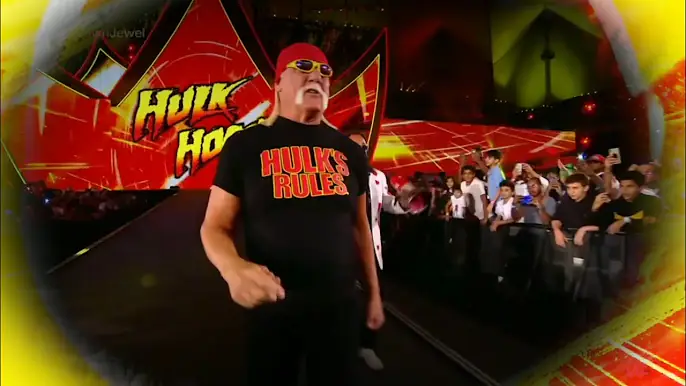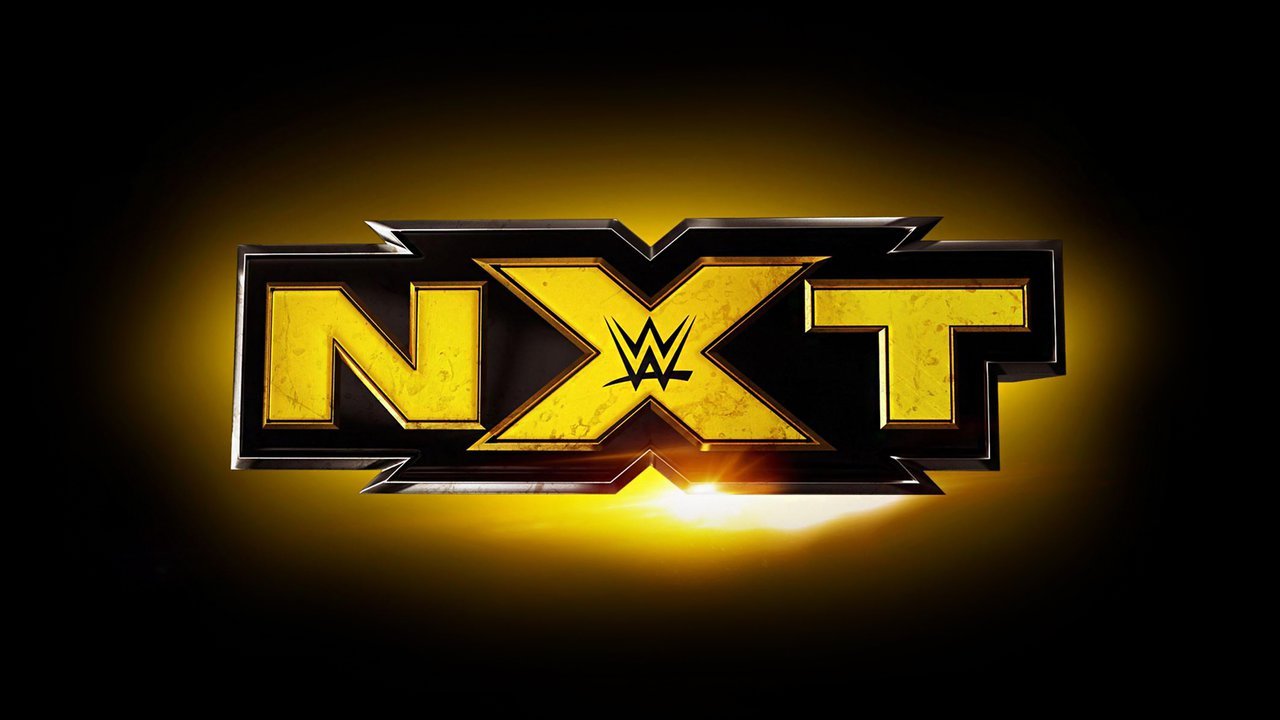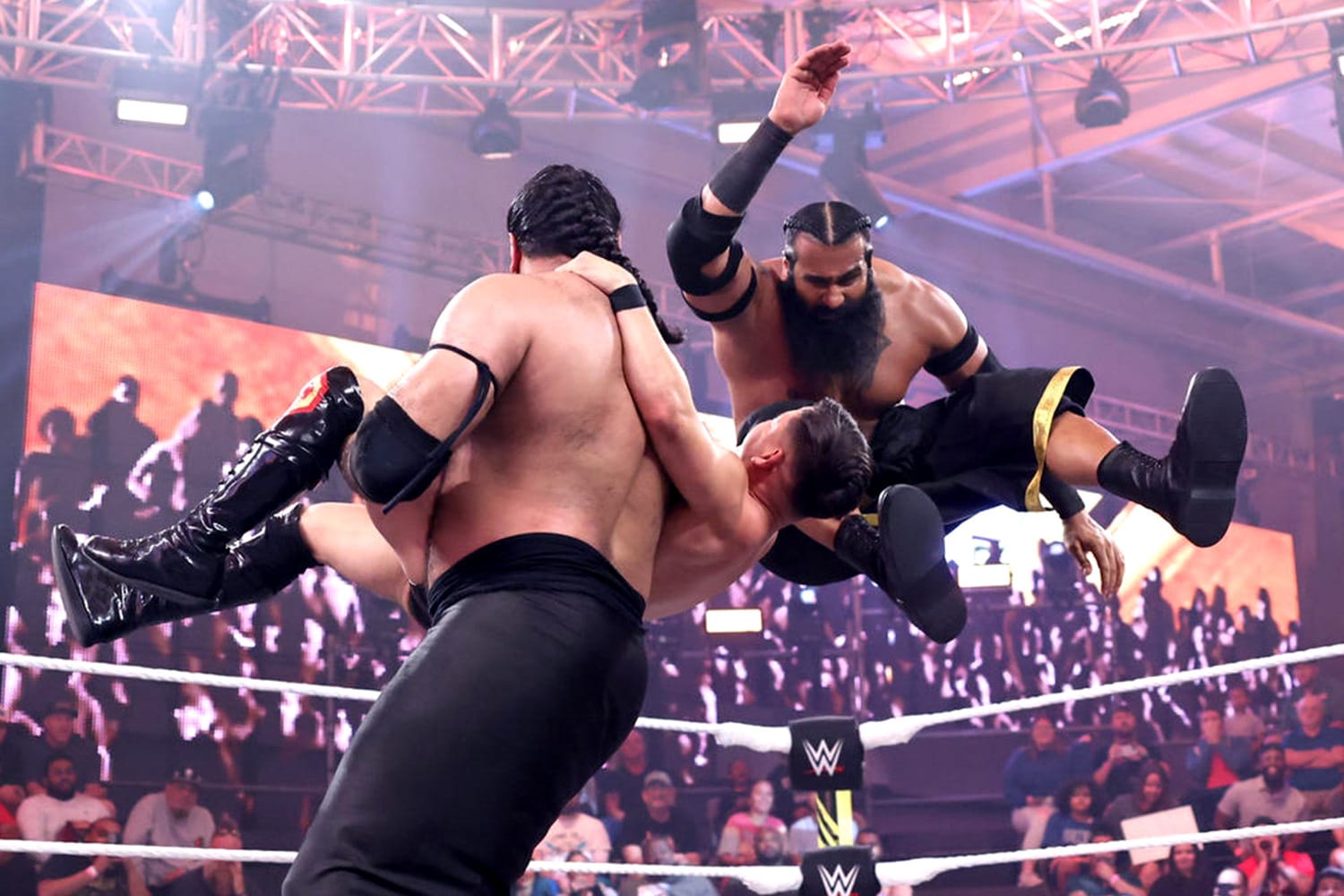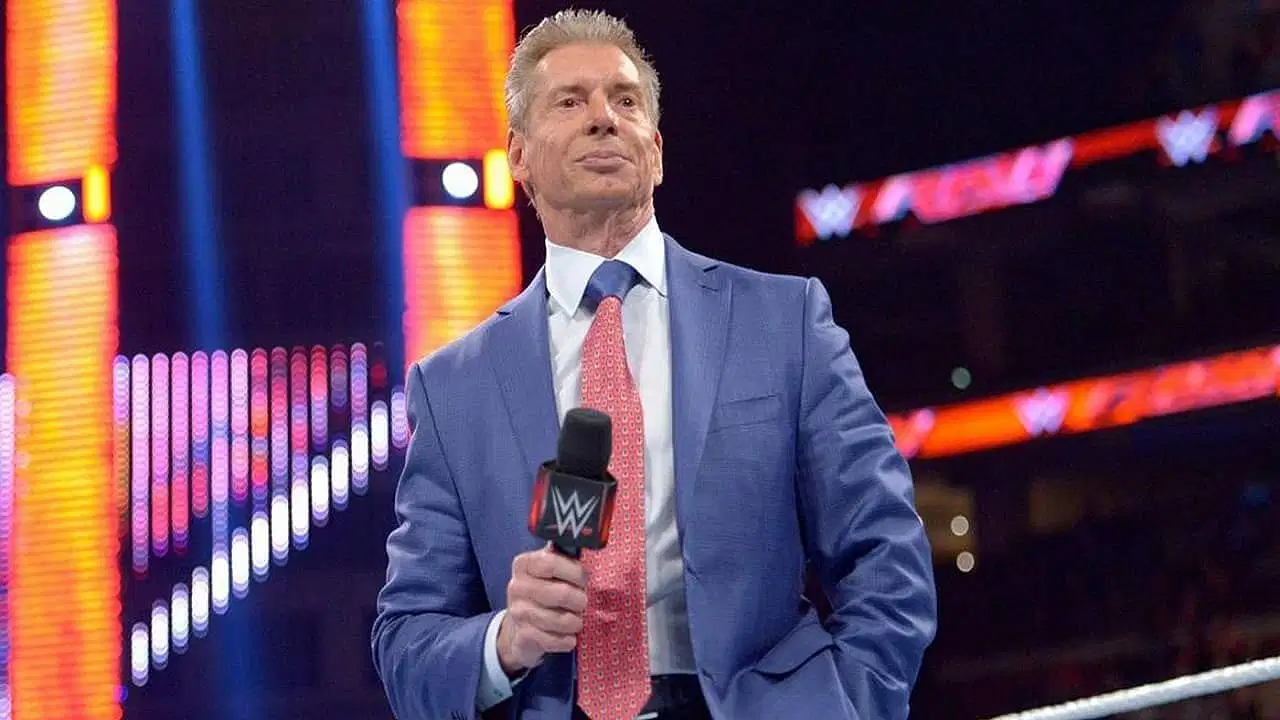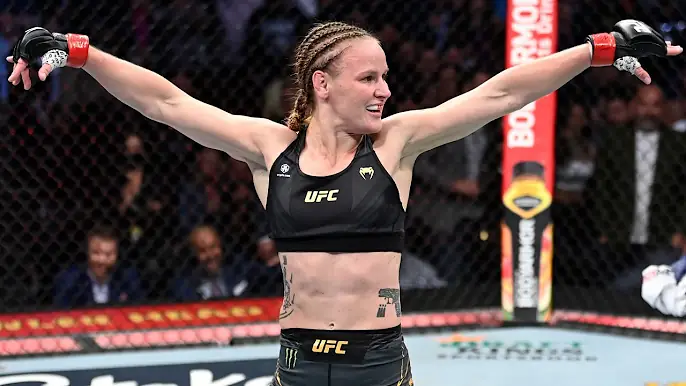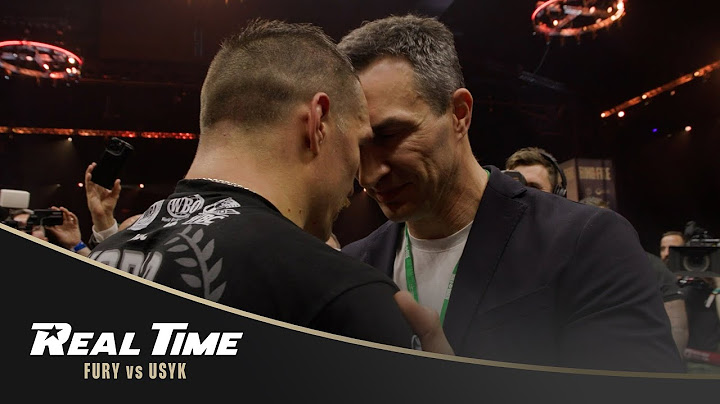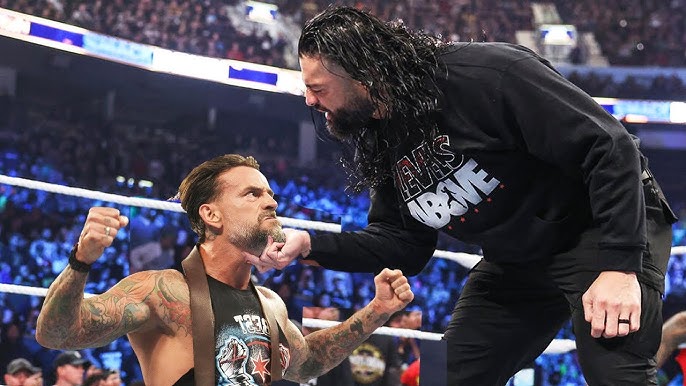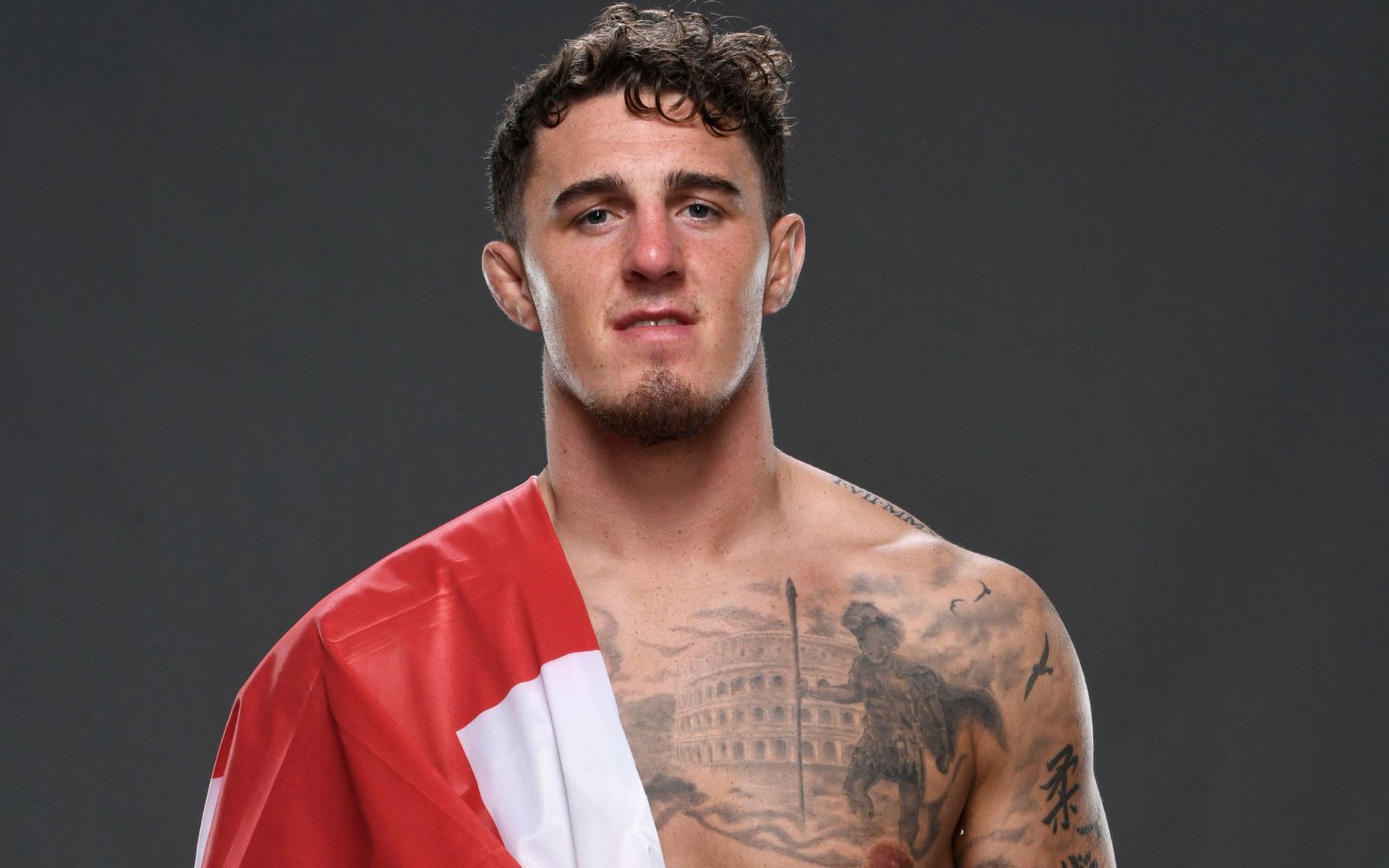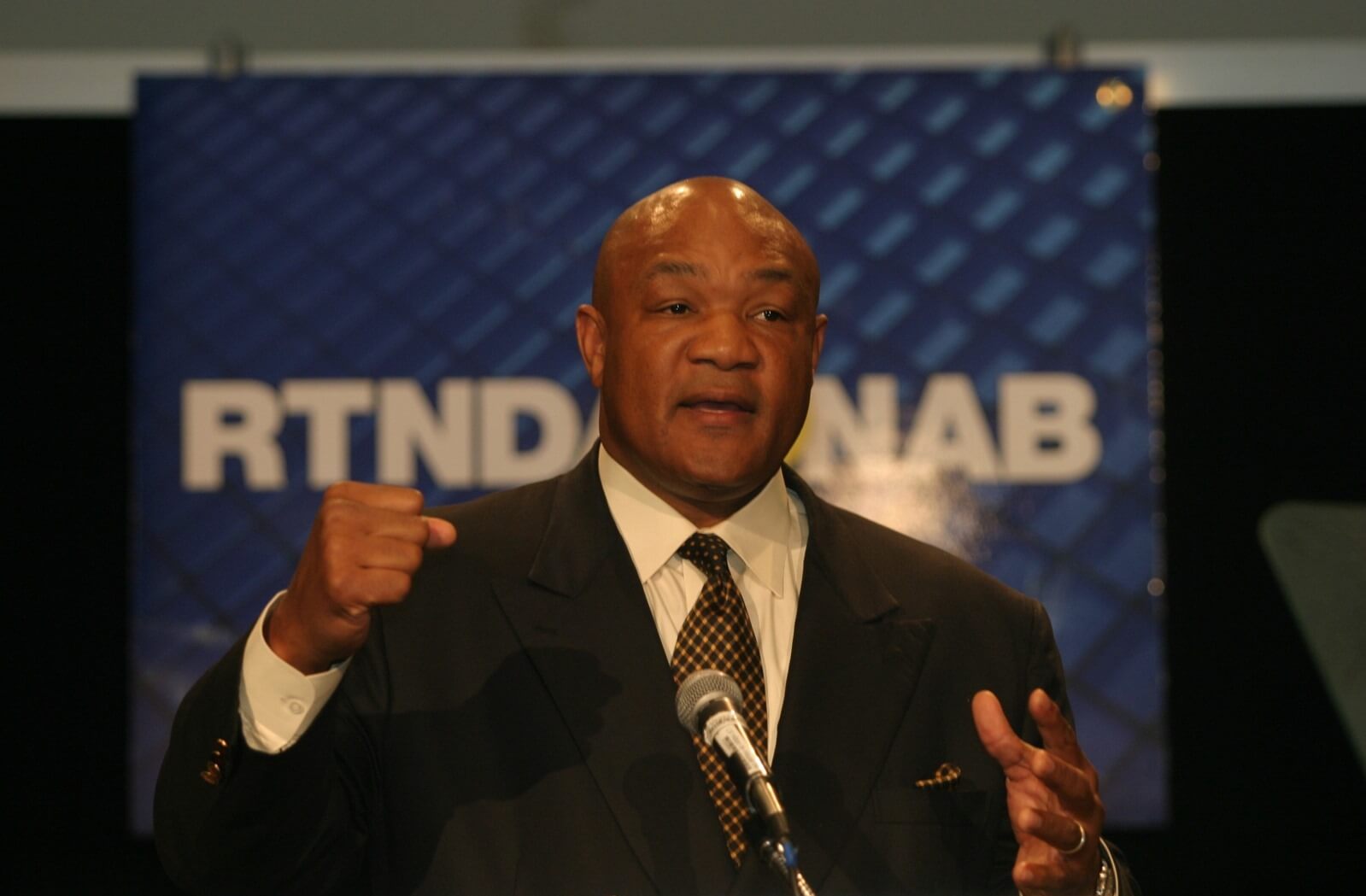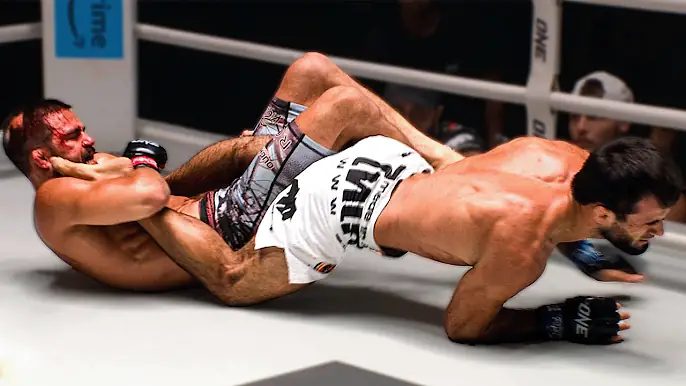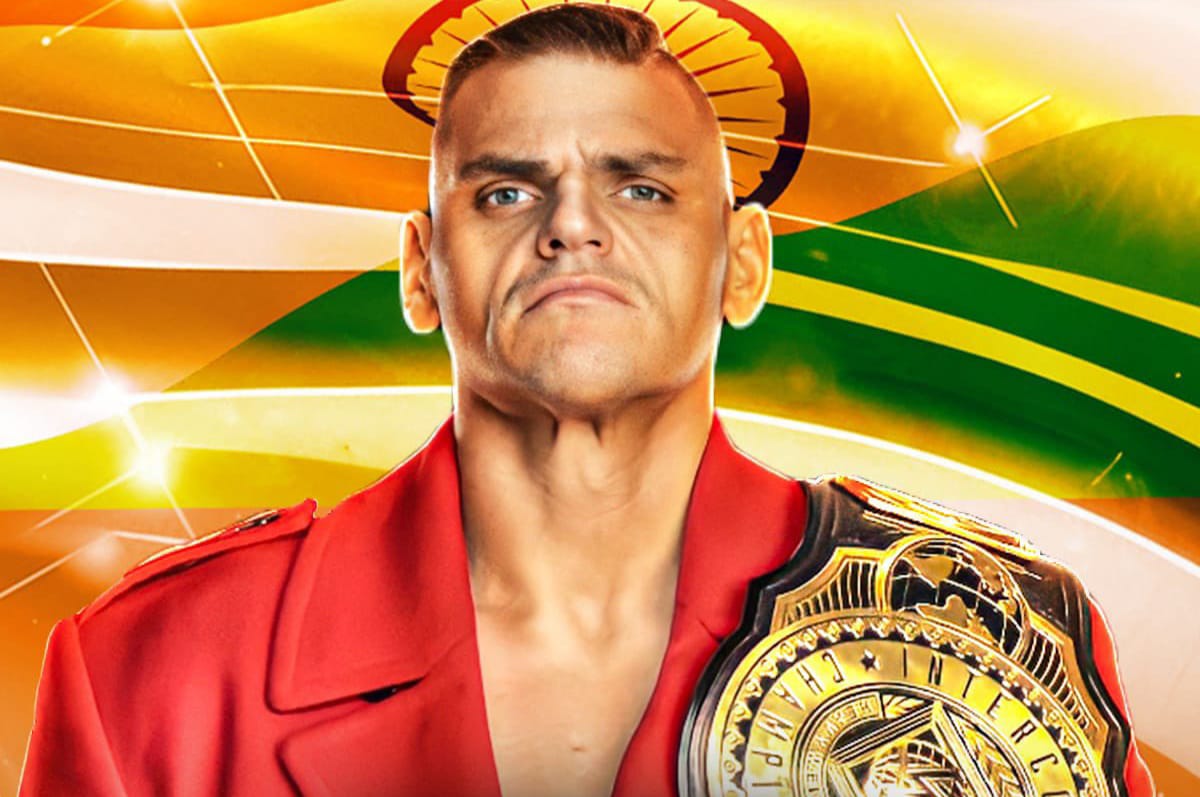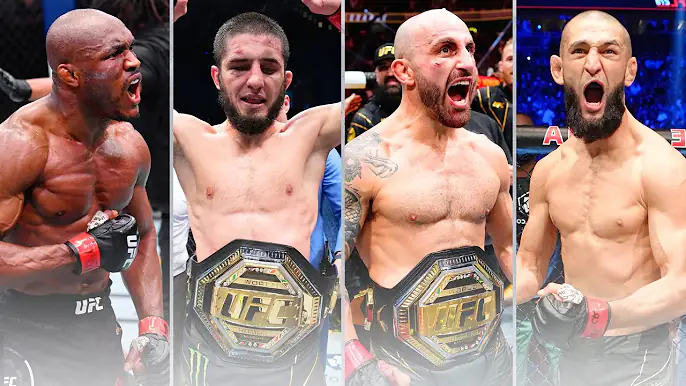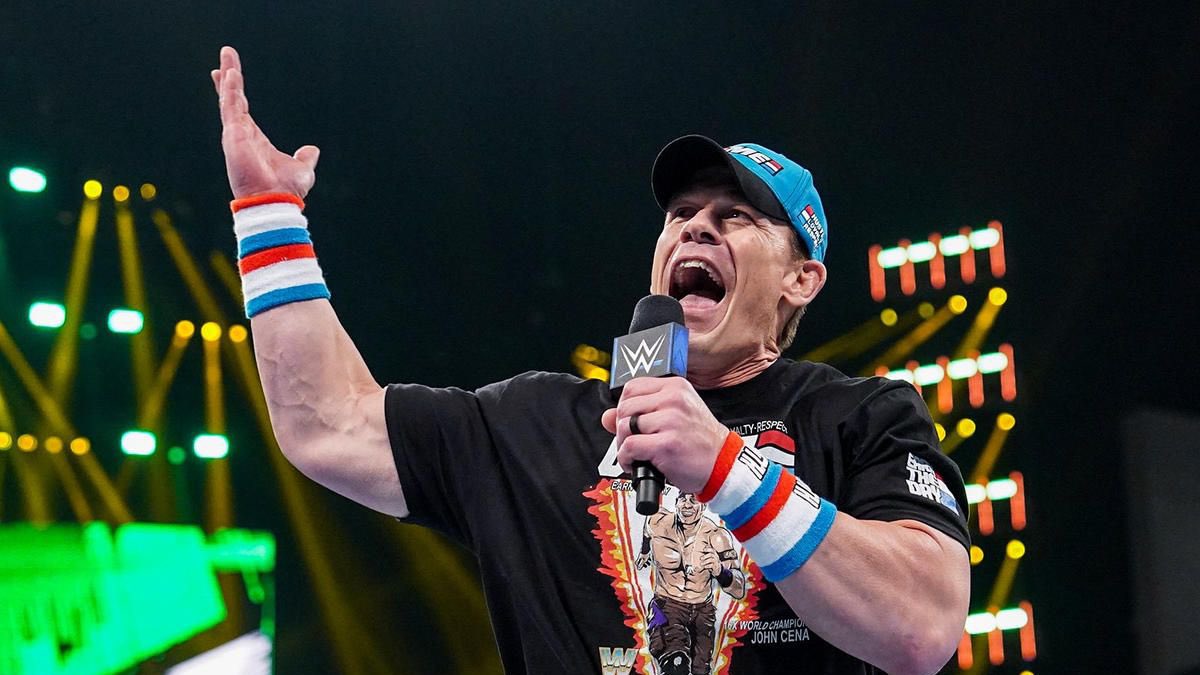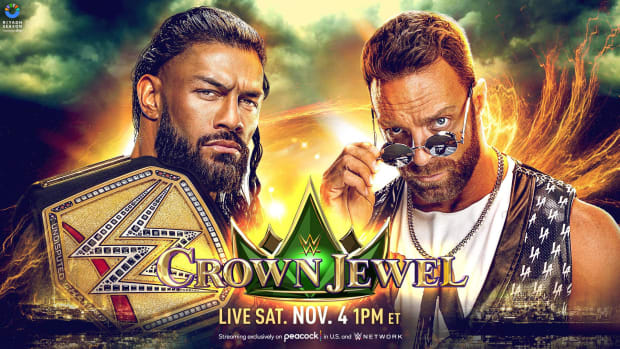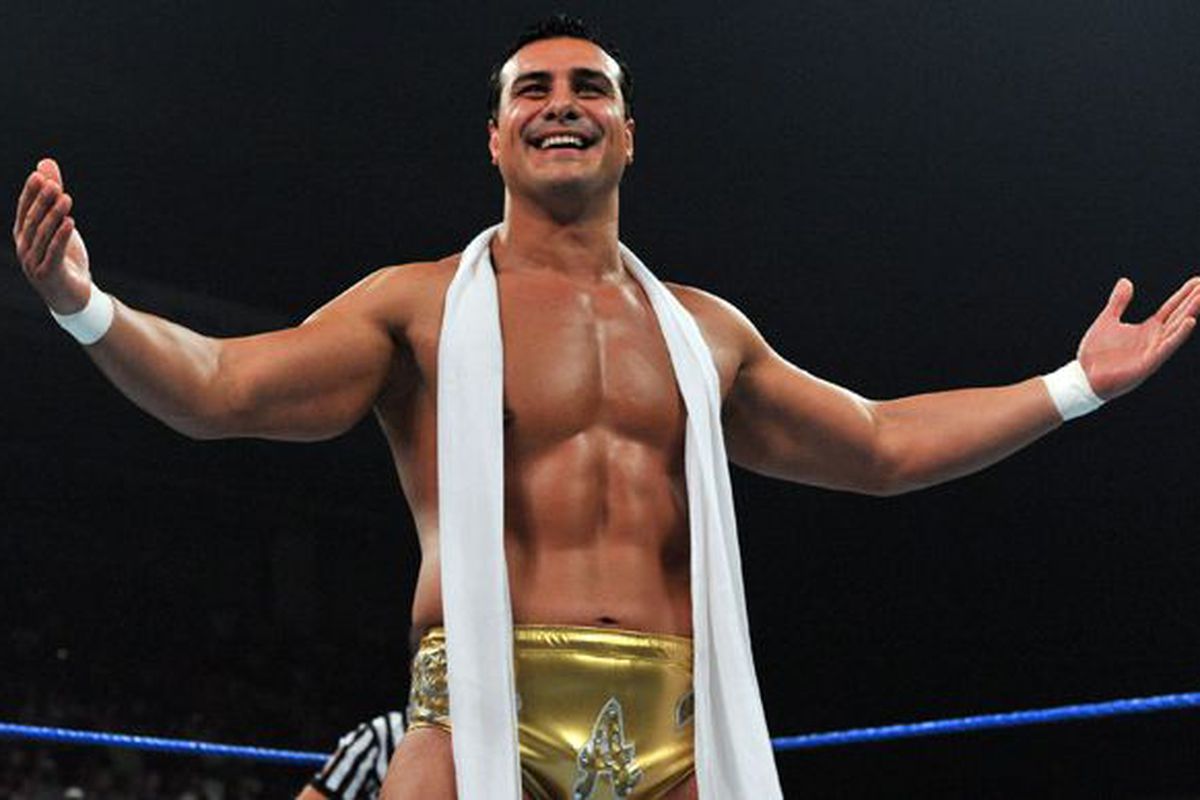WWE Backstage News: Serious Interest In Released AEW Star Miro; Timeline For Possible Summer Return
In a significant development that has wrestling fans buzzing, WWE has reportedly shown serious interest in bringing back former superstar Miro, who was released from All Elite Wrestling (AEW) in February 2025. The Bulgarian powerhouse, who previously competed in WWE as Rusev from 2010 to 2020, has become a hot commodity in the wrestling free agent market following his departure from AEW after a four-year run with the company. According to multiple reliable sources, WWE’s interest in re-signing Miro is substantial, though fans shouldn’t expect his return to be immediate. Recent reports indicate that while WWE has internally discussed creative ideas for Miro, a deal could potentially be reached toward the end of the calendar year, with summer or fall 2025 being the most likely timeframe for his WWE comeback.
WWE’s Renewed Interest in Miro
According to recent reports from reputable wrestling insider WrestleVotes, WWE’s interest in bringing Miro back into the fold is genuine and has been a topic of discussion within the company’s creative team. During a recent episode of Sportskeeda’s “Backstage Pass” podcast, WrestleVotes stated, “I’d expect Miro before the end of the year. I know there’s interest there. I don’t know if he’s ready to sign right now. Maybe, more of a summer or fall type of thing”3. This cautious timeline suggests that while WWE sees value in Miro’s potential return, there’s no rush to finalize a deal immediately.
This measured approach could be beneficial for both parties – giving WWE time to develop compelling creative plans for his reintroduction, while allowing Miro the opportunity to explore his options and potentially take some time away from the grueling wrestling schedule after his AEW departure. WrestleVotes Radio further elaborated on the situation, noting, “We are told there is interest within WWE to bring back Miro, aka the former Rusev. One source stated that while WWE has discussed creative ideas, nothing is imminent. The expectation is that a deal could potentially be reached toward the end of the calendar year”5.
The timing of these discussions is particularly interesting given WWE’s recent pattern of signing former AEW talent. With Rey Fenix having recently signed with WWE and set to debut on SmackDown, the company appears to be selectively targeting established stars who can make an immediate impact upon arrival4. Miro, with his recognizable presence, impressive physique, and proven in-ring abilities, certainly fits that profile of a performer who could seamlessly transition back into the WWE ecosystem.
WWE’s interest in Miro also reflects the company’s evolving recruitment strategy under Triple H’s creative direction. Unlike previous eras where WWE might have been reluctant to re-sign released talent, the current management appears more open to recognizing the value that established performers can bring, particularly those who have expanded their character and in-ring work during their time away from the company.
Former SmackDown General Manager Teddy Long commented on the rumors of Miro and his wife Lana (CJ Perry) potentially returning to WWE, saying, “I really can’t answer that. I don’t know what really the problem was with them when they were in WWE. So, I can’t tell you. I don’t know. But congratulations on their wedding and I wish both of them the best”3. While Long’s comments don’t provide additional insight into WWE’s current interest, they do highlight that there may have been behind-the-scenes factors that affected Miro’s previous WWE run.
Miro’s WWE Legacy and Achievements
To fully understand the significance of Miro’s potential WWE return, it’s essential to review his impressive legacy during his initial run with the company. After signing with WWE in 2010, the Bulgarian powerhouse spent several years developing in the company’s developmental territories before making his main roster debut in 2014 as Rusev, accompanied by Lana as his manager. His initial presentation as the “Bulgarian Brute” quickly established him as a dominant force in the company’s midcard division.
Rusev’s undefeated streak upon arriving on the main roster showcased his power and athleticism, culminating in him capturing his first United States Championship by defeating Sheamus at WWE Network’s exclusive event in November 2014. This victory marked the beginning of what would become a 146-day reign, establishing him as one of the most formidable mid-card champions in recent WWE history. His dominant style and impressive physical presence made him stand out among his peers during this period.
Perhaps the most significant moment of Rusev’s early WWE career came at WrestleMania 31 in 2015, where he made a spectacular entrance riding a tank for his United States Championship defense against John Cena. Although he ultimately lost the match and the championship, the iconic entrance and high-profile match solidified his position as a significant player in WWE. This moment remains one of the most memorable visuals in recent WrestleMania history and demonstrated WWE’s willingness to present Rusev as a special attraction.
Throughout his WWE tenure, Rusev would capture the United States Championship three times5, with his matches consistently displaying his unique combination of power, agility, and in-ring psychology. His ability to work effectively with a wide range of opponents – from high-flyers to fellow powerhouses – demonstrated his versatility as a performer and made him a valuable asset to WWE’s roster during his initial run with the company.
The most memorable chapter of Rusev’s WWE career came in 2018 with the organic rise of the “Rusev Day” phenomenon. What began as a simple catchphrase alongside Aiden English quickly evolved into one of the most popular acts in WWE, with fans enthusiastically chanting “Rusev Day” regardless of whether he was portrayed as a heel or face. Merchandise sales soared, and crowd reactions reached deafening levels, showcasing Rusev’s ability to connect with audiences when given the opportunity. Many fans and critics alike consider this period the high point of Rusev’s WWE career, despite the fact that it didn’t result in the main event push that many believed his popularity warranted.
Despite this overwhelming popularity, many fans and analysts felt that WWE never fully capitalized on the “Rusev Day” momentum. While he remained a featured performer, Rusev rarely received the main event push that his popularity seemed to warrant. This perceived missed opportunity has led many to speculate about what could have been – and what might still be possible if he returns to WWE with the creative freedom to fully explore his character under the new regime led by Triple H.
Miro’s AEW Journey and Departure
Following his WWE release in April 2020, Miro made his debut in All Elite Wrestling in September of that same year. His arrival in AEW was met with significant fanfare, as fans were eager to see how he would reinvent himself outside the WWE ecosystem. Initially introduced as “The Best Man” for Kip Sabian’s wedding storyline, Miro’s early AEW character represented a dramatic departure from his WWE persona. This fresh approach allowed him to showcase different aspects of his personality and performance style that had largely remained unexplored during his WWE tenure.
While this initial character direction received mixed reactions from fans and critics, Miro’s AEW run truly hit its stride when he evolved into “God’s Favorite Champion” in 2021. This reimagined character portrayed Miro as an unstoppable force who believed he was divinely chosen to dominate his opponents. The character work during this period showcased Miro’s previously untapped range as a performer, allowing him to deliver intense promos and develop a more nuanced on-screen presence that added significant depth to his wrestling persona.
This character evolution culminated in Miro capturing the TNT Championship from Darby Allin in May 2021. His subsequent reign as TNT Champion lasted 140 days and featured memorable defenses against talents like Eddie Kingston, Lance Archer, and Lee Johnson. During this period, Miro’s character work and in-ring performances received widespread acclaim, with many considering this the strongest run of his career. His presentation as an unstoppable force with religious undertones provided a fascinating contrast to his previous WWE character.
However, after losing the TNT Championship to Sammy Guevara in September 2021, Miro’s AEW momentum began to stall. His television appearances became increasingly sporadic, with prolonged absences that interrupted any sense of character continuity. When he did appear, his storylines often lacked the depth and direction that had made his TNT Championship run so compelling. This inconsistency prevented him from building on the momentum he had established during his championship reign.
By 2023, Miro’s AEW appearances had become even more infrequent, with reports suggesting that creative differences may have been a factor in his reduced role. His final AEW match took place in December 2023, after which he disappeared from AEW programming entirely. This extended absence culminated in his release from the company in February 2025, alongside several other talents as part of AEW’s roster restructuring5. The timing of his departure opened the door for discussions with WWE about a potential return to his former home.
Throughout his time in AEW, Miro demonstrated his ability to reinvent himself and connect with audiences through character work that differed significantly from his WWE presentation. This creative growth during his AEW tenure could potentially make him an even more valuable asset should he return to WWE, bringing a matured performance style and expanded character range that could lead to greater success than he achieved during his initial run with the company.
Discover how Miro’s character evolution could impact WWE programming through innovative storytelling and potential dream matchups that weren’t possible during his previous tenure. His refined character work and proven ability to connect with audiences in different ways could provide WWE with a versatile performer capable of slotting into various roles across the roster, from dominant heel to beloved fan favorite.
WWE’s Strategy of Recruiting Former AEW Talent
WWE’s reported interest in Miro is part of a broader pattern that has emerged in recent years – the company’s strategic recruitment of former AEW talent. This approach represents a significant shift from previous eras, where WWE might have been reluctant to sign performers who had become prominently associated with competing promotions. The current management under Triple H appears to be taking a more pragmatic approach, recognizing the value that established talents can bring regardless of their previous employers.
The most high-profile example of this strategy was Cody Rhodes, who left AEW in early 2022 to make a triumphant return to WWE at WrestleMania 38. Rhodes’ successful transition back to WWE, where he has become one of the company’s top stars, demonstrated the potential upside of this recruitment approach. His success may have influenced WWE’s willingness to pursue other former AEW talents who could similarly benefit from a change in creative environment.
In recent months, WWE has accelerated this strategy by signing several former AEW performers. Ricky Starks, known for his charismatic personality and impressive in-ring work in AEW, joined WWE and has quickly established himself as a rising star5. Similarly, the lucha libre star Penta has made the move to WWE after departing AEW, bringing his unique style and presentation to a new audience1. These signings indicate WWE’s willingness to invest in established talent who can make an immediate impact on their programming.
Most recently, Rey Fenix has signed with WWE following his exit from AEW, with vignettes already airing on SmackDown to promote his imminent debut. According to recent reports, “It is speculated that former AEW and Penta’s brother, Rey Fenix, could make a blockbuster debut on SmackDown. Speculation suggests that Rey Fenix, who has recently signed with WWE, could make his official debut tonight in London”4. This acquisition further strengthens WWE’s roster and potentially sets up a reunion of the Lucha Brothers tag team with his brother Penta.
This influx of former AEW talent into WWE comes during a period of significant transition for both companies. Under Triple H’s creative direction, WWE has placed increased emphasis on in-ring performance and long-term storytelling, creating an environment that might be particularly appealing to talents who value these aspects of professional wrestling. Meanwhile, AEW has been undergoing its own evolution, with roster adjustments and programming changes as it continues to define its identity in the competitive wrestling landscape.
WWE’s interest in recruiting these performers suggests a recognition of the value that experienced talents can bring, particularly those who have proven their ability to connect with audiences across different promotions. Rather than viewing time spent in AEW as a negative, WWE appears to be valuing the growth and development that these performers experienced during their time with the competing company. This approach acknowledges that valuable development can occur outside WWE’s ecosystem – development that can ultimately benefit WWE when these performers join or return to the company.
Beyond Miro, reports indicate that WWE has also shown interest in Alex Hammerstone, who recently finished his run with TNA Wrestling. According to WrestleVotes, “I know there’s interest with Alex Hammerstone. I don’t know if he’s looking for a WWE contract, if he’s going to spend some time on the indies or whatnot, but I know there’s interest from WWE in Alex Hammerstone”1. This further demonstrates WWE’s comprehensive approach to talent recruitment across the wrestling industry.
For an in-depth look at how free agent signings have historically changed wrestling promotions, check out our special feature on game-changing talent acquisitions that have shifted the competitive balance between companies. Throughout wrestling history, the strategic acquisition of established talent has often led to significant shifts in momentum and creative direction for wrestling promotions looking to gain an edge over their competitors.
Potential Creative Directions for Miro in WWE
Should Miro return to WWE as anticipated, the creative possibilities for his character are both extensive and intriguing. Having evolved significantly as a performer during his time in AEW, Miro could return to WWE with a refreshed approach that builds upon his previous “Bulgarian Brute” persona while incorporating elements of his more recent “God’s Favorite Champion” character. This evolution would allow him to present a more three-dimensional character than the one he portrayed during his previous WWE tenure.
One compelling direction would be to reintroduce Miro as a dominant singles competitor with immediate championship aspirations. His imposing physical presence and proven ability to deliver excellent matches with a wide range of opponents would make him a credible challenger for mid-card titles like the United States or Intercontinental Championships – potentially setting the stage for him to surpass his previous record of three US Championship reigns5. This approach would allow him to establish himself quickly while building toward potentially bigger opportunities down the line.
Alternatively, WWE could position Miro for an immediate push into the upper echelon of the card. With his improved promo skills and character work developed during his time away from WWE, Miro could be presented as a legitimate world championship contender. Potential feuds with current top stars like Cody Rhodes, Roman Reigns, or Gunther would offer fresh matchups that could highlight Miro’s power-based style against contrasting in-ring approaches. These high-profile feuds would immediately establish Miro as a significant player in WWE’s current landscape.
The question of whether Miro would return as a hero or villain remains open. His natural intensity and imposing presence lend themselves well to heel work, but the organic popularity he achieved during the “Rusev Day” era demonstrated his potential as a fan favorite. WWE might choose to initially present him as a dominant heel before allowing audience reactions to naturally guide his character direction – similar to how stars like Drew McIntyre have evolved from villains to heroes based on fan response. This flexible approach would allow WWE to adapt his presentation based on audience reception.
Another intriguing possibility would be reuniting Miro with his real-life wife CJ Perry (formerly Lana in WWE), either continuing their previous on-screen partnership or developing a new dynamic between the characters. Perry’s managerial skills and Miro’s in-ring prowess proved to be an effective combination during their previous WWE run, and a refreshed version of this pairing could add depth to his return. Former SmackDown General Manager Teddy Long acknowledged speculation about both Miro and Lana potentially returning to WWE, though he didn’t provide specific insights into the likelihood of this scenario3.
WWE could also consider placing Miro in a faction or alliance that complements his strengths while providing new creative avenues. Whether as the enforcer for an established group or as the leader of his own gathering of like-minded talents, this approach could immediately integrate him into meaningful storylines while maximizing his screen time and character development. This approach would allow Miro to interact with multiple performers across the roster, quickly establishing relationships and potential future storylines.
Regardless of the specific creative direction chosen, Miro’s potential return would likely benefit from lessons learned during his previous WWE tenure. The company’s failure to fully capitalize on the organic popularity of “Rusev Day” stands as a cautionary tale about missing opportunities when performers connect with audiences in unexpected ways. Under Triple H’s creative leadership, there might be greater willingness to adapt plans based on audience reaction, potentially allowing Miro more freedom to develop his character organically and respond to fan engagement.
Whatever path is chosen, Miro’s extensive experience, physical presence, and enhanced character work position him as a valuable addition to the WWE roster. His potential return later in 2025 could inject fresh energy into WWE programming while providing Miro himself with the opportunity to achieve the main event success that many fans believe he has always been capable of attaining.
The Changing Wrestling Landscape
The potential return of Miro to WWE reflects broader shifts in the professional wrestling industry, where the movement of talent between major promotions has become increasingly commonplace. This fluid exchange of performers represents a significant departure from previous eras, where wrestlers might spend their entire careers with a single company or face significant obstacles when attempting to transition between competing organizations. The current environment offers performers more options and greater leverage than at perhaps any previous point in wrestling history.
The establishment of AEW in 2019 fundamentally altered the wrestling landscape by providing an alternative major platform for performers. This competition has benefited wrestlers by creating leverage in contract negotiations and offering different creative environments to showcase their talents. For fans, this dynamic has provided diverse wrestling styles and storytelling approaches across different promotions, enriching the overall wrestling ecosystem. The ability to see familiar performers in new contexts has created fresh excitement and unpredictability.
Initially, the talent flow primarily moved from WWE to AEW, with performers seeking new creative opportunities or responding to WWE’s roster cuts. However, recent years have seen this pattern begin to reverse, with talents like Cody Rhodes returning to WWE and achieving significant success. This bidirectional movement suggests a maturing industry where performers can build their brands across different companies throughout their careers, potentially returning to previous employers with enhanced value and expanded skills.
The case of Miro potentially returning to WWE demonstrates how time spent in competing promotions can enhance a performer’s value rather than diminishing it. During his AEW tenure, Miro developed new dimensions to his character and refined his promo skills in ways that could make him an even more valuable asset upon a potential WWE return5. Similarly, his physical conditioning and in-ring style have continued to evolve, potentially offering WWE a more complete performer than the one who departed in 2020.
This talent exchange also influences the creative approaches of both companies. When performers move between promotions, they bring with them different experiences, techniques, and perspectives that can enrich their new environment. This cross-pollination of ideas potentially elevates the entire industry, encouraging innovation and preventing creative stagnation within either company. The introduction of fresh elements from competing promotions can inspire new directions and approaches to storytelling.
For WWE specifically, the recruitment of former AEW talents represents an evolution in the company’s talent acquisition philosophy. Rather than focusing exclusively on developing performers through their own system, WWE appears increasingly willing to recognize and capitalize on the development that wrestlers undergo elsewhere. This pragmatic approach acknowledges that valuable growth can occur outside the WWE ecosystem – growth that can ultimately benefit WWE when these performers return with enhanced skills and expanded character work.
From a business perspective, the movement of recognizable talents between promotions also creates moments of excitement and speculation that drive fan engagement. The “forbidden door” concept – where performers make surprising appearances across promotional boundaries – has become a significant talking point among wrestling fans. While Miro’s potential WWE return would represent a permanent move rather than a crossover appearance, it nonetheless taps into this same spirit of unpredictability and possibility that energizes the modern wrestling landscape.
Want to understand more about how WWE’s recruitment strategy compares to AEW’s talent retention? Our exclusive breakdown reveals the behind-the-scenes dynamics that influence these decisions and how they impact the competitive balance between promotions. The business strategies employed by both companies continue to evolve as they respond to each other’s moves in the ongoing competition for talent, viewership, and market share in the ever-changing professional wrestling industry.
Interest in Other Free Agents
While Miro represents one of the most significant potential acquisitions for WWE, the company’s talent recruitment efforts extend to several other notable free agents. This comprehensive approach to roster building suggests that WWE is actively seeking to strengthen its talent pool across multiple divisions and styles, creating a diverse and dynamic product for viewers across their various brands and programming.
According to recent reports, WWE has shown interest in Alex Hammerstone, who recently concluded his run with TNA Wrestling. On Sportskeeda’s “Backstage Pass” podcast, WrestleVotes stated, “I know there’s interest with Alex Hammerstone. I don’t know if he’s looking for a WWE contract, if he’s going to spend some time on the indies or whatnot, but I know there’s interest from WWE in Alex Hammerstone”1. This interest demonstrates WWE’s ongoing effort to identify and recruit talented performers regardless of their previous affiliation.
Hammerstone, known for his impressive physique and power-based wrestling style, has already made appearances on NXT television as part of the TNA and NXT crossover programming. In September 2024, he competed twice on NXT, losing to Oba Femi in his debut appearance before returning later in the month to defeat Tony D’Angelo via countout1. These appearances may have served as an informal tryout process, allowing WWE officials to assess his potential fit within the company’s structure and creative environment.
The interest in performers like Hammerstone and Miro reflects WWE’s current emphasis on physically imposing talents who can bring credibility and intensity to the roster. Under Triple H’s creative direction, there appears to be renewed appreciation for wrestlers who present a believable, athletic appearance while still delivering compelling in-ring performances. This focus on physically impressive performers has been evident in the company’s recent signings and the types of wrestlers who have received strong pushes on the main roster.
Beyond specific named targets, industry insiders suggest that WWE maintains a running list of free agents and soon-to-be available talents across the global wrestling scene. This proactive approach to talent scouting represents a significant evolution from previous eras, where WWE might have been more reactive in its recruitment strategy or focused primarily on its own developmental system. The company appears to be casting a wider net in its search for performers who can contribute to its various brands.
The company’s interest in international talents also continues to expand, with performers from Mexico, Japan, and Europe regularly appearing on WWE programming. This global approach to talent acquisition helps WWE maintain its position as wrestling’s most recognized worldwide brand while bringing diverse styles and perspectives to its product. The recent signings of Rey Fenix and Penta exemplify this international focus, bringing their unique lucha libre style to WWE audiences41.
For wrestlers currently working outside WWE, the company’s demonstrated willingness to sign established talents creates leverage in their existing contractual situations. The possibility of a WWE offer can influence negotiations with current employers, potentially resulting in improved terms or creative opportunities as promotions seek to retain valuable performers. This competitive environment ultimately benefits the wrestlers themselves, providing more options for career advancement and creative fulfillment.
The competitive market for wrestling talent ultimately benefits the performers themselves, who now have multiple viable options for advancing their careers at the highest levels of the industry. While WWE remains the largest and most globally recognized wrestling company, alternatives like AEW, TNA, and international promotions such as New Japan Pro Wrestling provide legitimate alternative paths for wrestlers to achieve financial success and creative fulfillment in an increasingly diverse wrestling landscape.
Conclusion
The reported interest in bringing Miro back to WWE represents a fascinating development in the constantly evolving professional wrestling landscape. With potential plans for a summer or fall 2025 return, both WWE and Miro appear to be taking a measured approach to ensure that any reunion would be positioned for maximum success35. This cautious strategy suggests lessons learned from past experiences and a desire to make any potential return as impactful as possible.
During his previous decade with WWE as Rusev, Miro established himself as a formidable presence with championship credentials and memorable moments. However, many fans and analysts believed that his full potential remained untapped, particularly during the height of the “Rusev Day” phenomenon when his connection with audiences reached unprecedented levels. His subsequent journey through AEW allowed him to develop new facets of his character and refine his presentation, potentially making him an even more valuable performer should he return to WWE.
WWE’s interest in Miro aligns with the company’s broader strategy of selectively recruiting established talents from competing promotions. Recent signings including Ricky Starks, Penta, and Rey Fenix demonstrate a willingness to recognize and capitalize on the development that performers undergo outside the WWE ecosystem145. This approach acknowledges that valuable growth can occur in different creative environments – growth that can ultimately benefit WWE when these performers join or return to the company with enhanced skills and expanded character work.
The timing of Miro’s potential return could prove particularly advantageous, as WWE continues to build momentum heading toward its largest annual events. A late 2025 debut would position Miro to potentially play a significant role in the build toward WrestleMania 42, whether as a featured performer in a championship program or as part of another high-profile storyline. This timing would allow WWE to integrate him into their long-term storytelling plans while giving him a prominent platform to reintroduce himself to the WWE audience.
For wrestling fans, the prospect of Miro’s WWE return creates intriguing possibilities for fresh matchups against current roster members who have risen to prominence during his absence. Potential confrontations with stars like Gunther, LA Knight, or a reunited Miro and Cody Rhodes could generate significant interest and compelling in-ring action. These fresh matchups would provide exciting new content for WWE programming while allowing Miro to showcase his abilities against a different generation of performers.
As the professional wrestling industry continues to evolve, with talent movement between promotions becoming increasingly commonplace, Miro’s journey exemplifies the modern wrestler’s career path. Rather than being defined by a single company or character, today’s performers have the opportunity to build their legacies across different promotions, bringing the lessons and growth from each experience forward into new chapters of their careers. This evolution benefits both the performers themselves and the fans who get to experience their work in different contexts and creative environments.

